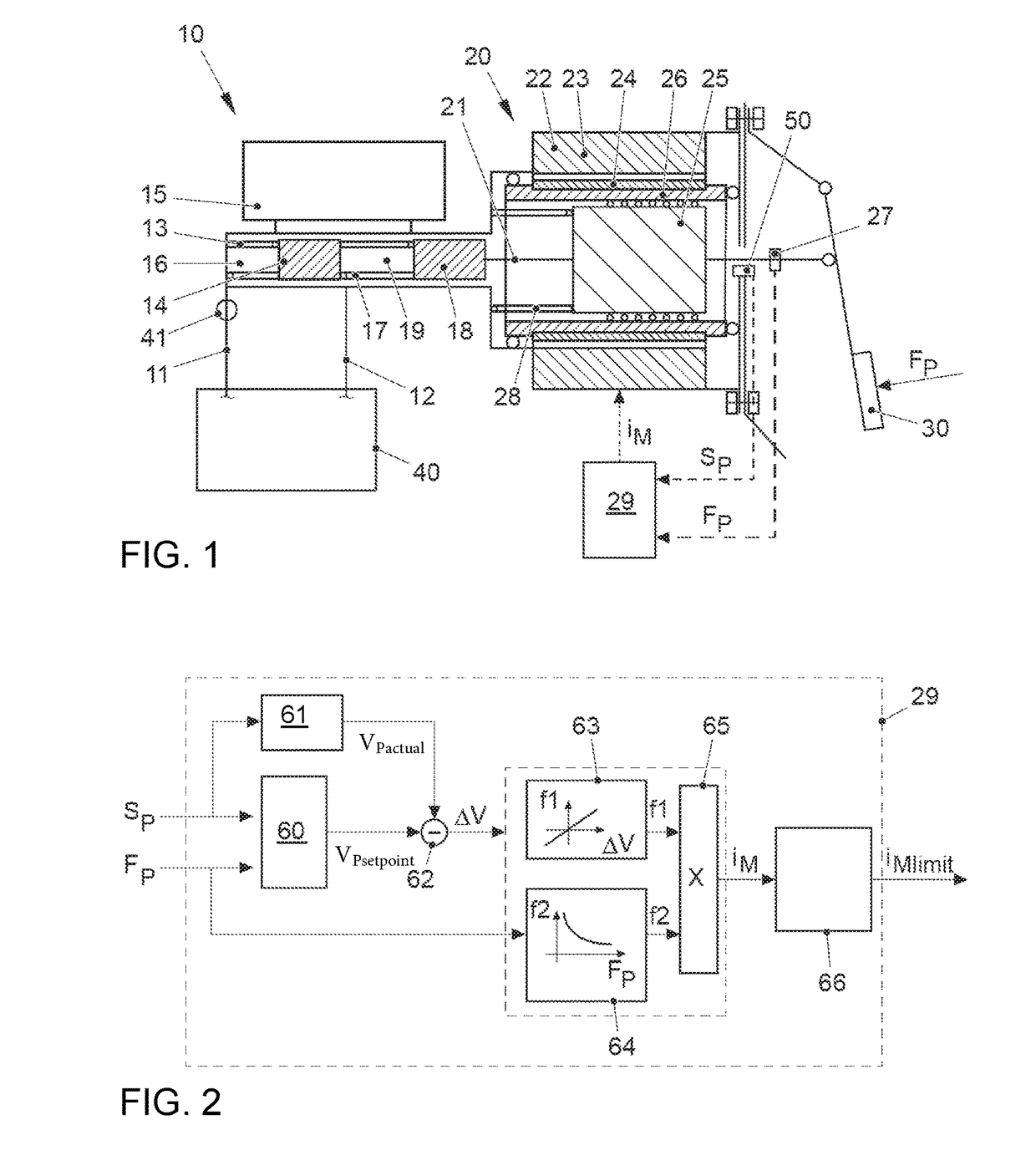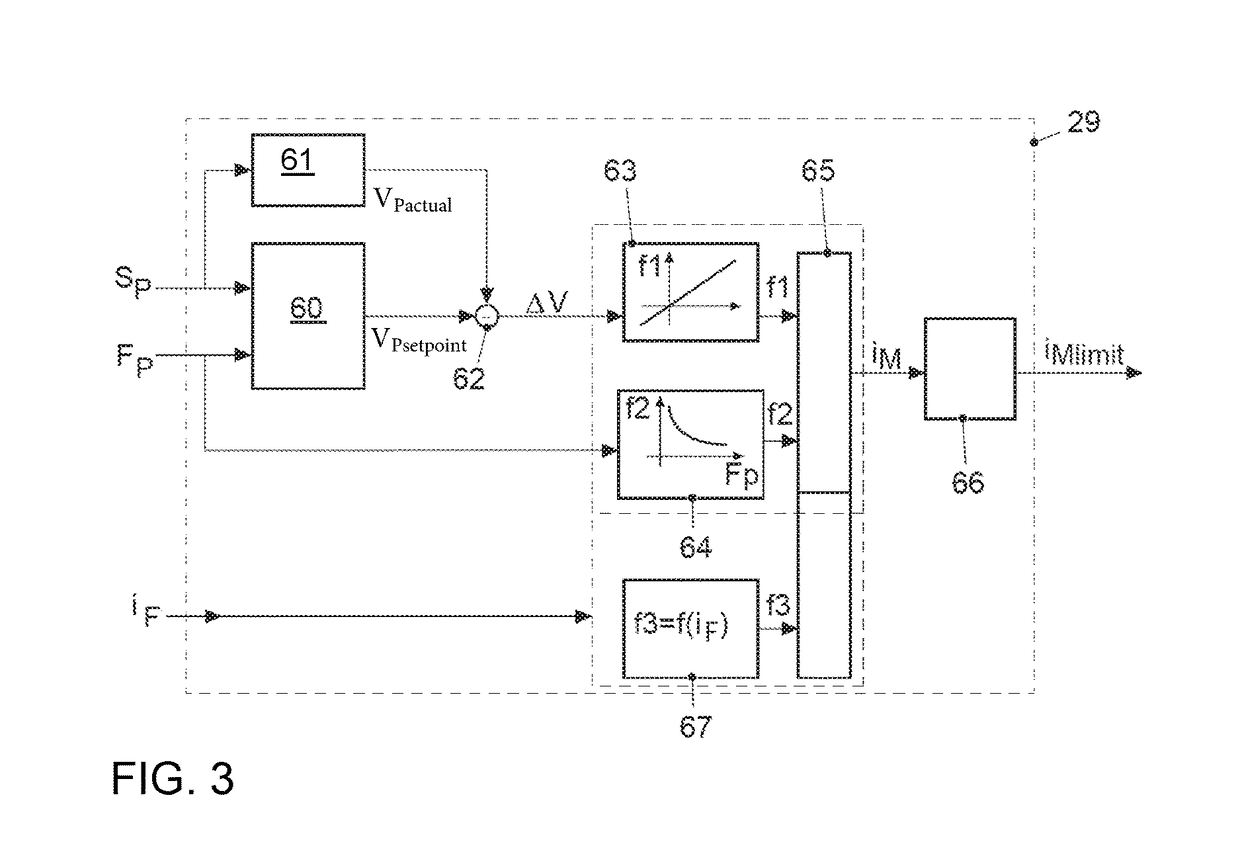Electromechanical brake booster
a brake master cylinder and electronic technology, applied in the direction of brake systems, vehicle components, transportation and packaging, etc., can solve the problems of high bernoulli force, slow brake pedal lever return using hydraulic pressure in the brake master cylinder, etc., to improve the return of the brake pedal lever
- Summary
- Abstract
- Description
- Claims
- Application Information
AI Technical Summary
Benefits of technology
Problems solved by technology
Method used
Image
Examples
Embodiment Construction
[0032]The exemplary embodiment in FIG. 1 shows a vehicle brake system comprising a brake master cylinder 10, an electromechanical brake booster 20 and a brake pedal lever 30. An ESP hydraulic unit 40, via which wheel brakes of the individual vehicle wheels are activated, is connected to tandem brake master cylinder 10.
[0033]Brake master cylinder 10 is connected to hydraulic unit 40 via two brake circuits 11 and 12. The two brake circuits 11 and 12 are activated via a first secondary piston 14 supported by a first return spring 13 and by a second primary piston 18 supported by a second spring 17. First spring 13 is used to push back secondary piston 14 so that brake fluid is able to flow back from a reservoir 15 into a first pressure chamber 16 of brake master cylinder 10. If a leak occurs in second hydraulic brake circuit 12, additional spring 17 is used to separate secondary piston 14 from primary piston 18, so that brake fluid is able to flow out of reservoir 15 into another press...
PUM
 Login to View More
Login to View More Abstract
Description
Claims
Application Information
 Login to View More
Login to View More - R&D
- Intellectual Property
- Life Sciences
- Materials
- Tech Scout
- Unparalleled Data Quality
- Higher Quality Content
- 60% Fewer Hallucinations
Browse by: Latest US Patents, China's latest patents, Technical Efficacy Thesaurus, Application Domain, Technology Topic, Popular Technical Reports.
© 2025 PatSnap. All rights reserved.Legal|Privacy policy|Modern Slavery Act Transparency Statement|Sitemap|About US| Contact US: help@patsnap.com



